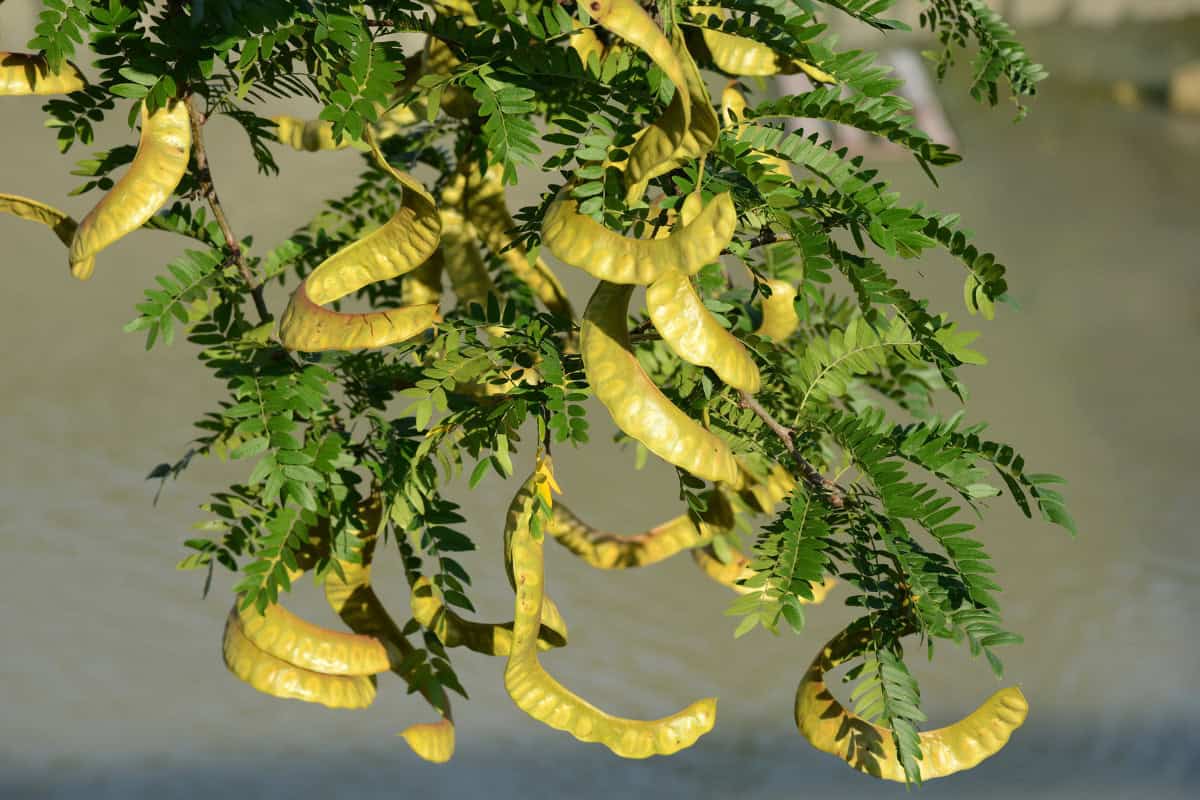
This comprehensive Honey Locust firewood profile explores one of America’s hardest-burning trees, delivering 26,000-28,000 BTUs per cord with exceptional heating characteristics and unique processing challenges.
Known for its incredible density and twisted grain, Honey Locust offers premium heat output for users willing to master its demanding processing requirements.
- Quick Reference Stats: Honey Locust Firewood Profile
- Overview & Identification
- Geographic Distribution
- Burning Characteristics
- Sensory Experience
- Processing & Preparation
- Specialized Uses
- Pros & Cons
- Best Practices & Tips
- Bottom Line: Honey Locust Firewood Profile
- 🌳 Honey Locust Firewood Quick Reference Table 🔥
- Related Resources: Honey Locust Firewood Profile
Quick Reference Stats: Honey Locust Firewood Profile
- Wood Type: Hardwood (legume family)
- BTU Rating: 26,000-28,000 BTUs per cord
- Ease of Splitting: Difficult (2/5 scale)
- Seasoning Time: 12-18 months
- Smoke Production: Very Low
- Spark/Pop Factor: Very Low
- Scent Profile: Mild – Clean, slightly sweet forest aroma
Overview & Identification
Honey Locust represents one of the most challenging yet rewarding firewoods available, offering exceptional heat output that rivals premium hardwoods while testing the skills of even experienced wood processors.
This incredibly dense legume family member provides outstanding burning performance with clean characteristics, but demands respect during processing due to both thorns and twisted grain patterns.
Common Names: Honey Locust, Thorny Locust, Sweet Locust
Scientific Name: Gleditsia triacanthos (family Fabaceae)
Tree Characteristics: Medium to large deciduous tree reaching 70-100 feet with distinctive compound leaves and often formidable thorns on trunk and branches. Produces long, twisted seed pods containing sweet pulp.
Geographic Distribution
Where You’ll Find It: Central and eastern United States from Pennsylvania to Nebraska, south to Texas and Florida. Widely planted as ornamental and naturalized beyond native range.
Availability: Moderate availability from tree services, land clearing, and storm damage throughout much of eastern United States
Growing Conditions: Adaptable to various soil conditions, drought tolerant once established. Thrives in disturbed areas and edges, often planted for erosion control and windbreaks.
Burning Characteristics
Heat Output & Performance
- BTU Content: Exceptional performance delivering premium heat output comparable to oak
- Burn Duration: Burns extremely long with outstanding heat retention throughout cycle
- Coaling Properties: Forms excellent coals that maintain heat for extended periods
- Flame Characteristics: Burns hot with steady, intense flames transitioning to superb coal beds
Ignition & Fire Management
- Ease of Lighting: Challenging to ignite due to extreme density – requires established fire
- Best Fire Stage: Outstanding primary fuel for serious heating and overnight burning
- Burn Rate: Very slow consumption provides maximum heat output per log
- Heat Consistency: Exceptional reliability with steady, intense heat delivery
Sensory Experience
Smoke Profile
- Smoke Volume: Very low smoke production when properly seasoned
- Smoke Color: Minimal, clean smoke with excellent dispersal
- Smoke Flavor: Mild, clean flavor excellent for cooking applications
- Creosote Production: Very low due to clean burning characteristics and low moisture
Sound & Visual
- Crackling/Popping: Very quiet burning with minimal crackling or popping
- Sparking Tendency: Extremely low spark production – excellent safety profile
- Flame Appearance: Steady, intense flames with impressive heat radiating characteristics
Aroma
- Burning Scent: Clean, mild forest fragrance with subtle sweetness
- Pleasant Factor: Pleasant and unobtrusive – doesn’t overwhelm other scents
- Intensity: Light aromatic presence that complements rather than dominates
Processing & Preparation
Splitting Characteristics
- Ease of Splitting: Extremely difficult due to twisted, interlocked grain patterns
- Grain Pattern: Highly twisted and interlocked grain that resists conventional splitting
- Tools Needed: Hydraulic splitter strongly recommended – hand splitting very challenging
- Best Splitting Conditions: Split when green if possible – becomes nearly impossible when dry
Seasoning Requirements
- Drying Time: 12-18 months minimum for adequate seasoning due to extreme density
- Moisture Content: Target 15-20% but requires extended time to reach due to density
- Seasoning Tips: Aggressive splitting essential to expose surface area for drying
- Storage Considerations: Requires excellent air circulation and patience for proper seasoning
Processing Notes
- Chainsaw Considerations: Extremely hard wood that dulls chains quickly – maintain sharp equipment
- Bark Characteristics: Rough, deeply furrowed bark with distinctive diamond patterns
- Handling: Very heavy, dense wood – among heaviest to handle and transport
- Safety Concerns: Thorns present serious puncture hazard – protective equipment essential
Specialized Uses
Premium Heating Applications
- Serious Heating: Outstanding choice for heating large spaces efficiently
- Overnight Burning: Excellent coal formation provides all-night heat retention
- Energy Efficiency: Maximum BTU output reduces wood consumption and processing time
- Commercial Applications: Popular choice for workshops and commercial heating needs
Cooking & Smoking Applications
- High-Heat Cooking: Excellent for applications requiring sustained high temperatures
- Smoking Applications: Clean burning characteristics excellent for meat smoking
- Pizza Ovens: Outstanding choice for wood-fired ovens requiring intense, sustained heat
- Temperature Control: Reliable, steady burning aids precise temperature management
Pros & Cons
Advantages
- Exceptional BTU output – among highest available firewoods
- Burns extremely clean with minimal smoke production
- Outstanding coaling properties for extended heat
- Excellent safety profile with minimal sparking
- Very low ash production for easy cleanup
- Burns for extended periods reducing feeding frequency
- Clean burning makes excellent cooking wood
- Sustainable use of often-unwanted thorny trees
- Extremely efficient heat source reduces overall wood needs
Disadvantages
- Extremely difficult splitting requires specialized equipment
- Very long seasoning time tests patience and planning
- Formidable thorns create serious safety hazards during processing
- Heavy, dense wood makes handling physically demanding
- Twisted grain patterns frustrate traditional splitting techniques
- May require professional processing for safety and efficiency
- Can be expensive due to processing challenges
- Challenging to ignite without established fire
- Limited availability in some regions
Best Practices & Tips
Processing Safety & Strategy
- Thorn Protection: Full protective equipment essential including puncture-resistant gloves
- Equipment Investment: Hydraulic splitter nearly essential for efficient processing
- Professional Processing: Consider having commercially processed for safety and efficiency
- Timing: Process when green if possible – seasoned wood becomes extremely difficult
Fire Management Optimization
- Fire Building: Use easier woods to establish fire before adding honey locust
- Loading Strategy: Add to established fires for maximum heat output
- Mixing Ratios: Combine with easier-lighting woods for optimal fire management
- Overnight Use: Load established fires for all-night burning capability
Bottom Line: Honey Locust Firewood Profile
Honey Locust represents the ultimate challenge and reward for serious firewood users who demand maximum heat output and are willing to invest in proper processing equipment and techniques.
While the processing demands are significant, the exceptional BTU performance and clean burning characteristics make it worthwhile for dedicated heating applications.
Best For: Serious heating needs, users with hydraulic splitters, professional processing options, maximum BTU requirements, and experienced wood processors
Skip If: You lack proper splitting equipment, need easily processed wood, are a beginner, or don’t require maximum heat output
If you’re ready to see how Honey Locust measures up at a glance, use the handy quick reference table below to compare its essential characteristics and performance.
🌳 Honey Locust Firewood Quick Reference Table 🔥
Honey locust is a powerhouse heating wood—extreme density, slow burn, and huge BTU output. Choose it for marathon heat and premium coals!
| Characteristic | Rating/Value | Notes |
|---|---|---|
| 🔥 BTU per Cord | 26,000-28,000 | Exceptional heat output |
| ⚖️ Density | Very High | Among densest firewoods |
| ⏰ Seasoning Time | 12-18 months | Extended drying required |
| 🪓 Splitting Difficulty | Difficult (2/5)⭐ | Hydraulic splitter recommended |
| 💨 Smoke Production | Very Low | Exceptionally clean |
| ✨ Spark/Pop Factor | Very Low | Excellent safety |
| 🚀 Ignition Ease | Challenging | Needs established fire |
| ⚡ Burn Rate | Very Slow | Maximum burn time |
| 🔥 Coaling Ability | Excellent | Outstanding coal formation |
| 🌸 Scent Quality | Pleasant | Clean, mild aroma |
| 🍳 Cooking Suitability | Excellent | Clean burn, high heat |
| 🌱 Sustainability | Good | Often unwanted trees |
| 📍 Regional Availability | Eastern/Central US | Moderate availability |
| 💰 Cost Level | Premium | Reflects processing difficulty |
| 🎯 Best Use | Serious heating, overnight burning | Premium performance |
| 🏆 Overall Rating | Ultimate heating wood |
Related Resources: Honey Locust Firewood Profile
Last updated: 8/25/2025

